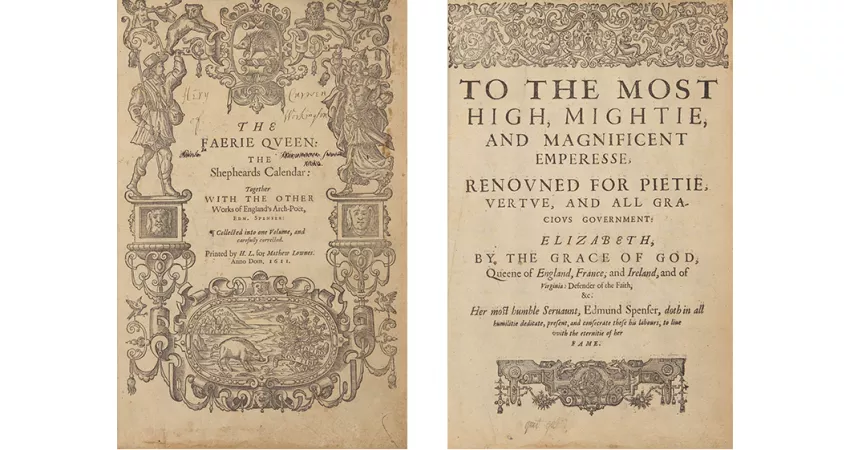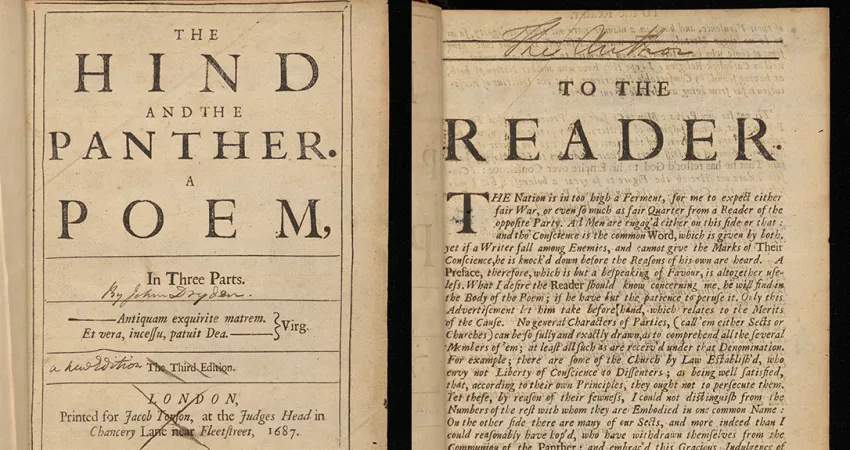At the start of the sixteenth century in England, the Renaissance was underway.
A complex, influential period running until the revolutionary years of the seventeenth century, the Renaissance had a profound effect on English literature and national life.
Part of a much wider European cultural movement, it drastically shaped the idea of Englishness and the English nation, both at home and abroad. Starting in late thirteenth century Italy, it then slowly spread across the continent—arriving late in England due to its relative geographical isolation. Coined from the French for ‘rebirth’, the Renaissance was characterized by an effort to revive ideas from classical antiquity, combining this ancient knowledge with new discoveries and technologies.
The rich collections at New College Library contain many classic examples of English Renaissance literature. One of the earliest renaissance items in the Library dates from the very start of this period—MS 320. This book is unique as its very physical form represents an important shift in book technology. The first part of the book is a clear link to the medieval past, as it is a fifteenth-century manuscript of Wycliffite psalms. The second part of the book, though, was created using the printing press—one of the technological marvels of Renaissance Europe. Famously invented by Johannes Gutenberg in the middle of the fifteenth century, this device completely revolutionised book production, as movable type drastically improved both speed and accuracy when compared to the creation of hand-written manuscripts.
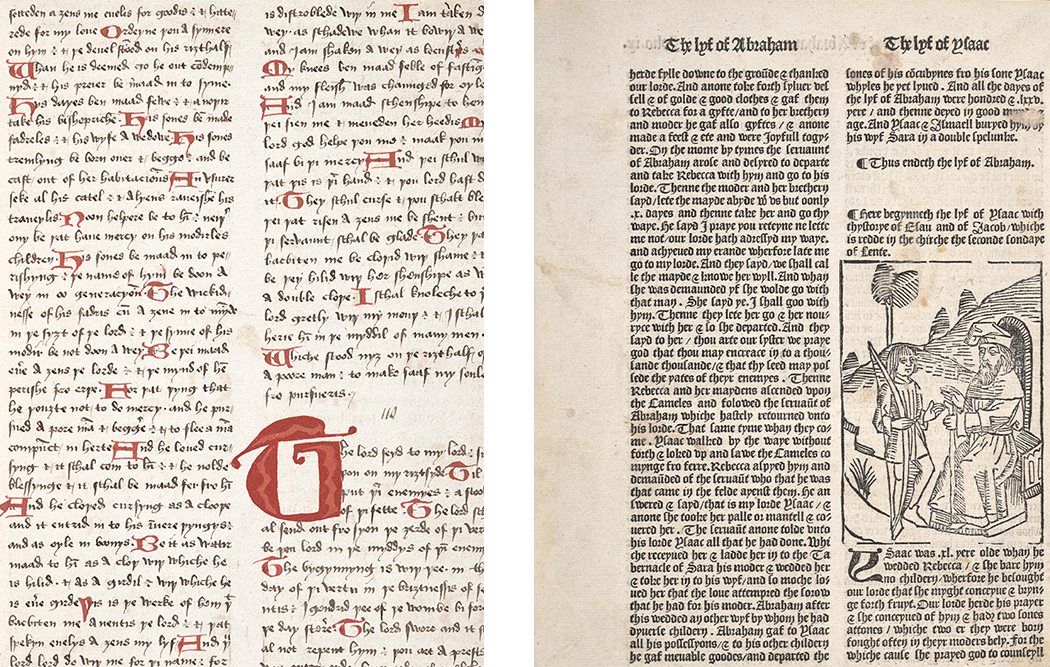
Above, you can see the two technologies side-by-side in MS 320. On the left is the manuscript section, whilst on the right you can see the printed technology in action. This printed section is an early incunable copy of the Legenda aurea or Golden Legend, one of the most popular religious works of the European Middle Ages.
Such popular works were clear choices for early printers, as there was already an established market. Indeed, the printed texts in MS 320 are especially important for English printing history, as they were produced by William Caxton (c. 1422–c. 1492)—the first person to introduce the printing press in England. Below, you can see Caxton’s printing mark, which identifies his work. Note also the repair made to the page at some point in this book’s history.
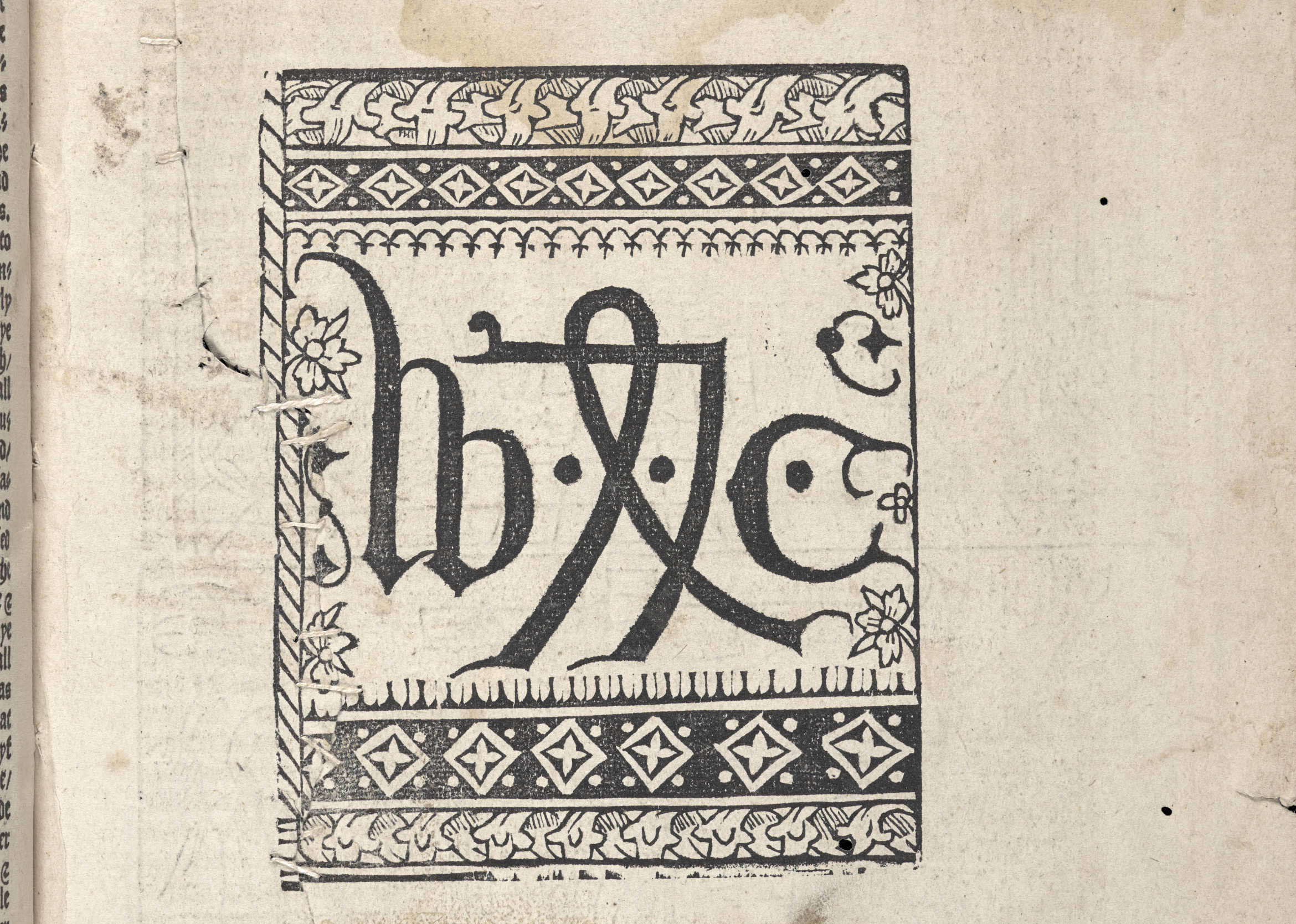
Caxton had printed his first edition of this text in 1487. After his death, it was then reissued by his successor Wynkyn de Worde (d. c. 1534) in a second edition in 1493, and then a third edition in 1498 or 1499, eventually reaching a ninth edition in 1527.
This New College copy is part of the third edition, printed at Westminster by Wynkyn de Worde. Only thirty-two copies of this edition survive, many imperfect, as is ours: only forty-seven folios of this book are present. The section contains some of Caxton’s own additions to the Golden Legend, ‘the stories of the Bible’, in which he presents the lives of people from the Old Testament in a format similar to that of the lives of the saints.
The new technology of printing, though, was far from limited to producing traditional texts that heavily drew on earlier medieval traditions.
Instead, the new ideas and experiences during the Renaissance helped to shape a new English literature—one that enjoyed a much greater readership thanks to higher literacy rates and the speed of the printing press.
This diversification in English Literature is also reflected in the New College collections. Below, you can see an important first edition copy of Thomas More’s Utopia, published in Louvain (modern-day Belgium), in 1516. An early work of satirical fiction, it describes the people of a fictional island and their religious, social, and political customs. In the picture below, you can see two leaves from the front of this text, depicting a map of the island of Utopia and the Utopian alphabet.

Such works represented a new form of literature—one that would build on new ideas around the perfect society and challenge existing assumptions. Often, this was to great cost—Thomas More was executed by King Henry VIII, essentially on account of his belief that ‘no temporal man may be head of the spirituality’.
If an author could successfully navigate the political upheavals of the sixteenth century, though, these new forms of literature also brought great prestige—creating an English literature that celebrated the English nation. One such notable author was Edmund Spencer (1522/1553–1599), one of the greatest poets of Modern English verse. Born the son of a lowly civil servant, Spencer climbed his way up the greasy pole in spectacular fashion—and ended up being buried in the prestigious Poets’ Corner in Westminster Abbey upon his death. In the gallery below, you can see some pages from New College’s early 1611 copy of his two most famous works: The Faerie Queene and The Shepheardes Calendar.
Envisaged as a twelve-book poem, the first three books of The Faerie Queene were published in early 1590, three more in 1596, then fragments of a book seven in 1609. One of the longest poems in English at over 36,000 lines and over 4,000 stanzas (though unfinished), for this epic Spenser invented a new verse form, consisting of eight iambic pentameter lines and a final ‘Alexandrine’ line in iambic hexameter, now known as the Spenserian stanza. He summarised the poem thus:
Using a deliberately archaic style, the allegorical poem praises Elizabeth I (represented by Gloriana, the Faerie Queene herself—and the virgin Belphoebe), as well as Christian virtues, particularly those of holiness, temperance, chastity, friendship, justice, and courtesy.
The Renaissance qualities of this New College copy of the Faerie Queene is only enhanced by the fact that it is bound together with The Shepheardes Calendar. First published in 1579, this work was Spencer’s first major poetic work—sometimes seen as signalling the birth of the English Renaissance in literature. Inspired by Virgil, Spenser wrote the poem in the form of twelve eclogues (short pastoral poems), in which characters take on the role of innocent shepherds, and discuss life and love—fashioning thereby satirical opinions about current events.
Spencer was followed by the greatest name ever to be associated with Elizabethan literature—possibly, indeed, any literature—William Shakespeare.
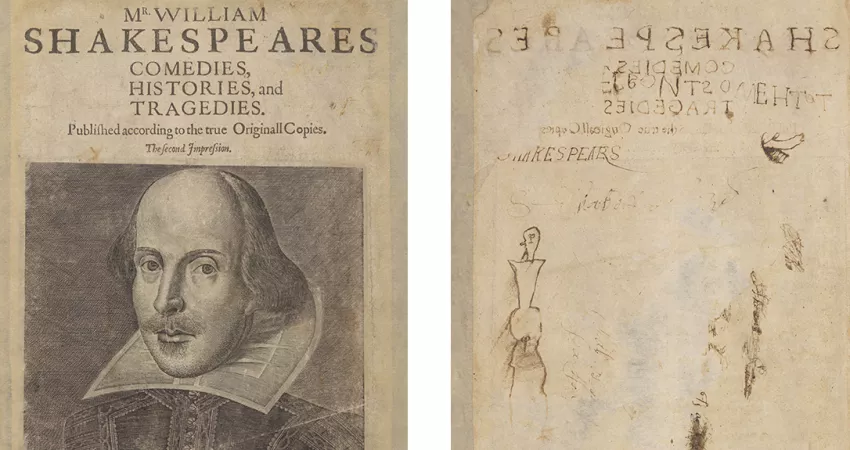

In essence a 'second edition’ of Shakespeare’s works, the Second Folio was published nine years after the First Folio.
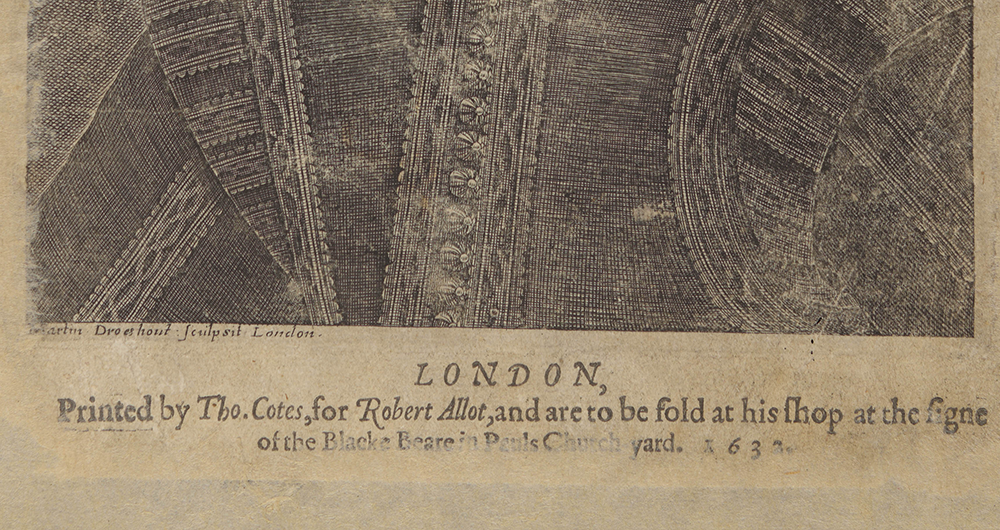
At the bottom of the title-page, you can see the imprint. Originally, the New College copy of the Second Folio was to be sold at Robert Allot's shop, by the sign of the Black Bear in St Paul's Churchyard, London.

At some point, the title-page verso has been used by somebody to practise their penwork! The letters have been highlighted and doodles have also been added.
Title-page and title-page verso
Both New College Library, Oxford, BT1.7.8 [detail]
New College Library is fortunate to hold two Shakespeare folios—a fourth folio and a second folio. Above, you can see the title-page and title-page verso of the New College Second Folio, which is easily one of the most studied texts in the whole of English Literature. Click on the dots to discover more about this fascinating text.
In essence a second edition of Shakespeare’s works, the Second Folio is in the same format as its predecessor. In fact, it was re-printed page-by-page, with a number of changes added to the text from the First Folio. In their book, Shakespeare’s Seventeenth Century Editors, 1632–1685, scholars Matthew W. Black and Matthias A. Shaaber list 1679 deliberate editorial changes in total, including 459 alterations of grammar, 359 affecting the meter, and 130 changes pertaining to the action. Many of these changes have since been deemed worthy and are reproduced in modern editions of Shakespeare’s plays.

Like the Second Folio, the New College Fourth Folio also contains interesting marginalia. On page 58, towards the end of Macbeth, somebody has drawn the image shown above. Again, it is unclear what this picture is supposed to represent. Perhaps it is meant to illustrate Macbeth’s castle? Or perhaps it is meant to represent the Tower of the Five Orders in the Old Bodleian Library? We may never know, but the appearance of these drawings in both New College folios reveals the unique history of all rare books. In the case of the Second Folio, this history at New College is also surprisingly recent. In fact, it entered the Library only in 1983, when it was donated to New College by the eminent surgeon Sir John Charles Nicholson (1904–1986), who matriculated in 1923.
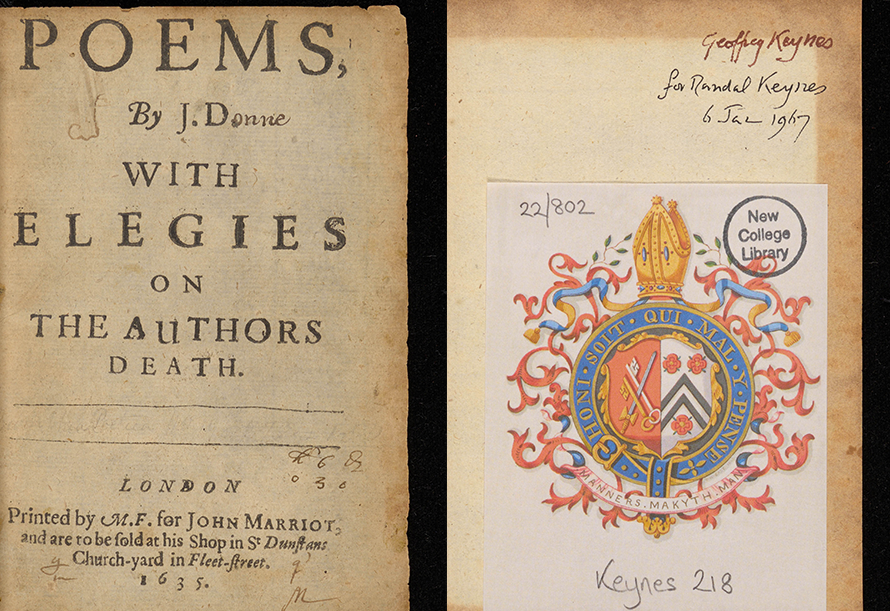
Indeed, New College’s collections are growing all the time, thanks to the generosity of our alumni. In November 2020, the conservationist and New College alumnus Randal Keynes (1948–2023) donated the book pictured above to the Library, along with over 250 other volumes relating substantively to our eighteenth-century alumnus bishop Robert Lowth. Above, you can see the title-page of the book, whilst his handwritten dedication is shown on the right, above the New College bookplate.
Dating from 1635, it is an edition of poems by John Donne—widely considered one of the greatest of English Renaissance poets. A distinctive characteristic of his later poetry is its exploration of the paradoxes of faith, the relationship between the human and the divine, and salvation, marked by striking emotional intensity. What is perhaps his most oft-quoted poem appears in this volume (pictured below)—Holy Sonnet X.
![New College Library, Oxford, Keynes 218, p. 337 [detail]](/sites/default/files/inline-images/12_NEW_Keynes_218_p_337_Holy_Sonnet_X.jpg)
Donne’s poetry gained a small but significant following in his lifetime, before falling out of fashion. Not until the twentieth century did he re-emerge—properly reassessed—as the greatest of the metaphysical poets, with a deep understanding of life and love, making him popular among modernist writers and philosophers.
Shortly after John Donne’s death in 1633, the English Renaissance came to an end.
Charles I’s tumultuous reign had ended in Civil War—a period which decimated the country and ended in the King’s execution, a previously unthinkable act. After an interregnum period under Oliver Cromwell, the monarchy was restored in 1660 with a new King, Charles II, returning from exile in continental Europe. This momentous event had profound literary consequences in the country—with authors continuing to build on themes raised during the previous century. Again, it is possible to explore this Restoration literature in the collections of New College library.
The foremost writer of Restoration England was John Dryden (1631–1700), England’s first poet laureate. As a literary critic and as a translator—notably of Chaucer, Homer, Horace, Ovid, and especially Virgil—he remains probably unsurpassed in English, and is also one of his century’s finest poets and dramatists.
In the gallery above, you can see two of Dryden’s most famous works: Religio Laici or a Layman’s Faith (1682) and The Hind and the Panther (1687).
Religio Laici builds on the religious turmoil encountered in the Renaissance as it is ostensibly an apologia for the teachings of England’s state church (first established under King Henry VIII). In it, it is possible to see both Dryden’s philosophical skepticism and his progression to Catholicism—he converted in his mid-fifties. The New College copy of this important text is a first-edition, second-state copy, bound by Riviere and Son in crushed green morocco. The poem memorably concludes with a plea for social moderation, since ‘Common quiet is Mankind’s concern’.
The New College Hind and the Panther is a much longer poem, which allegorically sets forth that the Roman Catholic Church is the one holy catholic and apostolic Church founded by Christ, something that may have severely discomfited many readers in Protestant England at that time. This New College book is a third edition, with a title-page that bears interesting manuscript additions relating to authorship, edition, and imprint. In this poetic allegory, the Roman Catholic Church is a ‘Milk white Hind, immortal and unchang’d’, the Church of England ‘the Panther sure the noblest, next the Hind, / And fairest creature of the spotted kind’; an array of far less attractive beasts represent other Protestant sects—against which the Hind, the Panther, and the Crown should, so the poet argues, now unite.
As we have seen on this page, English Literature greatly developed between 1501 and 1700.
In this period, the literature of the country reflected changes in wider English society. At the start of the sixteenth century, literature was looking back towards a medieval past—even as the new technology of the printing press would change it forever. As Renaissance ideas slowly spread across the country, though, and England developed economically, politically, and militarily, this period saw the emergence of not only a literature proudly written in the English language, but one that was also unique to England.
In comparison to the Renaissance in European countries—such as France and Italy—the English Renaissance did not focus as much on fine art and music, but rather on the development of a distinct English literature. It was in this period that authors such as Shakespeare, Spencer, and John Donne first wrote—authors well-known around the world even today, four centuries later. As the country fell into Civil War and then re-emerged with a new, reformed monarchy, Restoration authors such as John Dryden then built on the themes explored in the Renaissance, exploring the religious and political turmoil that had profoundly altered the country through their poetry.
Thanks to the generosity of its alumni and its stability over the centuries, New College Library is fortunate to hold works from all of these authors in our collections. On the next page, we turn our attention to the next century and the Romantic period. Click below to explore further.


